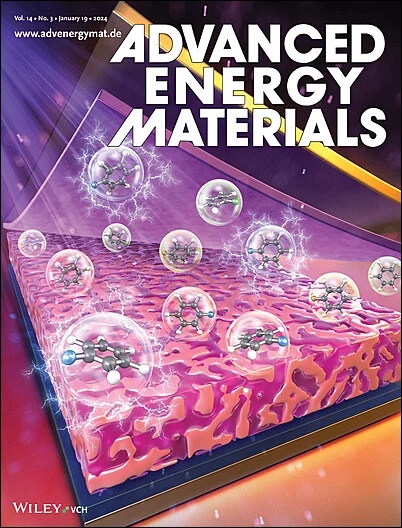Interface Engineering with ZrS₂: Achieving 10000-Cycle Lifespan in High-Rate Sodium Metal Batteries
IF 26
1区 材料科学
Q1 CHEMISTRY, PHYSICAL
引用次数: 0
Abstract
Sodium metal batteries (SMBs) have emerged as promising alternatives to lithium-ion batteries for low-cost, high-energy-density energy storage. However, their practical application is hindered by uncontrolled dendrite growth and unstable interfacial reactions. In this study, a ZrS₂-based interlayer is introduced to enable dendrite-free, high-capacity SMBs with exceptional long-term stability. The 2D ZrS₂ sheets form a tightly bonded interface with the Na metal, effectively suppressing parasitic reactions at the electrolyte|Na interface. Additionally, ZrS₂ offers strong Na⁺ adsorption and features confined 2D ion transport channels, which facilitate uniform, planar Na deposition decoupled from the desolvation process. Importantly, the ZrS₂ interlayer demonstrates high Na⁺ diffusivity and accommodates Na⁺ via a reversible intercalation mechanism, thereby maintaining structural integrity under high current densities and prolonged cycling. As a result, the ZrS₂-modified Na anode achieves a remarkable cycle life of 4800 h at 2 mA cm⁻2 with an areal capacity of 10 mAh cm⁻2 in symmetric cells. In full-cell configurations, it delivers outstanding cycling stability over 10000 cycles at an ultrahigh rate of 50 C. This work provides a new design paradigm for interfacial engineering in SMBs and demonstrates a practical route toward safe, high-performance SMBs with enhanced durability.

ZrS 2界面工程:实现高速率钠金属电池10000次循环寿命
钠金属电池(smb)已成为锂离子电池的有前途的替代品,用于低成本、高能量密度的储能。然而,它们的实际应用受到不受控制的枝晶生长和不稳定的界面反应的阻碍。在这项研究中,引入了一种基于ZrS₂的中间层,使无枝晶、高容量的smb具有出色的长期稳定性。二维ZrS 2薄片与Na金属形成紧密结合的界面,有效抑制了电解质|Na界面的寄生反应。此外,ZrS 2具有强的Na⁺吸附作用,并且具有受限的2D离子传输通道,这有助于与脱溶过程分离的均匀平面Na沉积。重要的是,ZrS₂夹层表现出高Na⁺的扩散率,并通过可逆的插层机制容纳Na⁺,从而在高电流密度和长时间循环下保持结构完整性。结果,ZrS 2修饰的Na阳极在2 mA cm - 2下达到了4800小时的显著循环寿命,在对称细胞中的面积容量为10 mAh cm - 2。在全电池配置下,它在50℃的超高速率下提供了超过10000次循环的出色循环稳定性。这项工作为中小板的界面工程提供了一种新的设计范例,并展示了一条通向安全、高性能、耐用性增强的中小板的实用途径。
本文章由计算机程序翻译,如有差异,请以英文原文为准。
求助全文
约1分钟内获得全文
求助全文
来源期刊

Advanced Energy Materials
CHEMISTRY, PHYSICAL-ENERGY & FUELS
CiteScore
41.90
自引率
4.00%
发文量
889
审稿时长
1.4 months
期刊介绍:
Established in 2011, Advanced Energy Materials is an international, interdisciplinary, English-language journal that focuses on materials used in energy harvesting, conversion, and storage. It is regarded as a top-quality journal alongside Advanced Materials, Advanced Functional Materials, and Small.
With a 2022 Impact Factor of 27.8, Advanced Energy Materials is considered a prime source for the best energy-related research. The journal covers a wide range of topics in energy-related research, including organic and inorganic photovoltaics, batteries and supercapacitors, fuel cells, hydrogen generation and storage, thermoelectrics, water splitting and photocatalysis, solar fuels and thermosolar power, magnetocalorics, and piezoelectronics.
The readership of Advanced Energy Materials includes materials scientists, chemists, physicists, and engineers in both academia and industry. The journal is indexed in various databases and collections, such as Advanced Technologies & Aerospace Database, FIZ Karlsruhe, INSPEC (IET), Science Citation Index Expanded, Technology Collection, and Web of Science, among others.
 求助内容:
求助内容: 应助结果提醒方式:
应助结果提醒方式:


